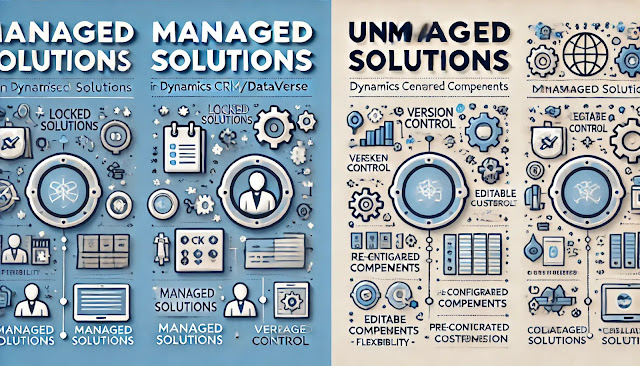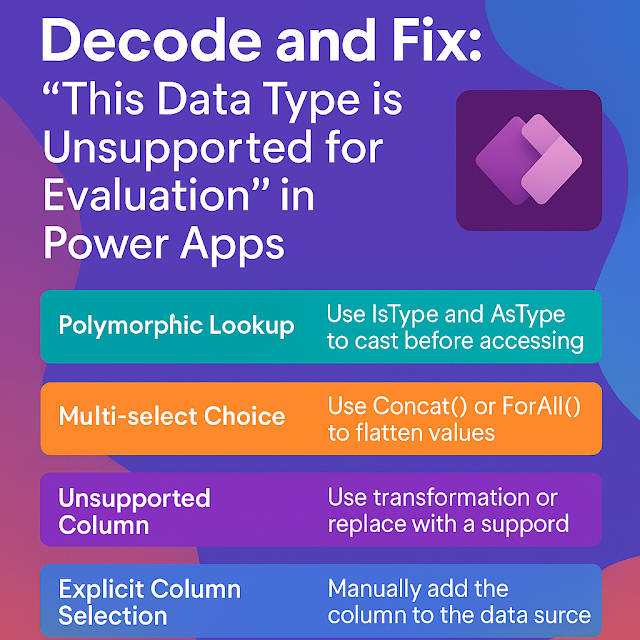Plugin development in Dynamics CRM is one of the most advanced and intricate components, requiring deep expertise in the platform's event pipeline and a solid architectural design. Poorly designed plugins can introduce significant performance bottlenecks. A key consideration is plugin depth, which indicates the number of nested executions within a single transaction. Uncontrolled plugin depth can lead to recursive loops, increased processing time, and system instability—making its management essential in enterprise-grade solutions.
What Is Plugin Depth?
Plugin depth is an integer value that represents the level of recursive execution or chaining of plugins. It is used internally to prevent infinite loops or overly complex recursive plugin calls.
You can access the current plugin’s depth using:
context.Depth
Why Depth Matters
Microsoft places a limit on plugin depth to avoid performance issues and infinite recursion.
- The default maximum depth is 8.
- If the plugin execution depth exceeds this limit, the system throws an exception:
System.InvalidOperationException: Infinite loop detected in plugin execution. Depth > 8
Can Depth Be Negative?
- No, plugin depth in Dataverse cannot be negative.
- The depth is always a positive integer (starting from 1) and increases with each subsequent internal call that causes a new plugin execution.
Why High Plugin Depth Can Be a Problem
High plugin depth is often a sign of:
- Poor plugin design (circular or overly dependent logic)
- Excessive nested writes (e.g., plugin A updates entity B, triggering plugin C…)
- Lack of separation between business rules and logic layers
Risks of High Plugin Depth:
1. Performance Degradation
- More processing time = slower form loads, saves, and operations.
- Can easily breach the 2-minute timeout for plugins.
2. Circular Execution / Infinite Loops
- Plugin A updates a record that triggers Plugin A again = loop = crash.
3. Max Depth Limit Exceeded
- Dynamics throws an error if the depth goes beyond 8:
"The plug-in execution has exceeded the maximum depth allowed of 8."
4. Debugging Nightmares
- Difficult to trace who triggered what.
- Hard to maintain or test.
How to Reduce Plugin Depth and Improve Performance
Use Flags to Prevent Recursive Execution
Set a custom attribute like `IsPluginExecuted = true` during the first run, and skip execution if already processed:
// Skip execution or handle accordingly
OR use shared variables in the execution context:
if (context.SharedVariables.Contains("AlreadyProcessed"))
return;
context.SharedVariables["AlreadyProcessed"] = true;
Optimize Logic with Stage and Mode
- Use Pre-Validation for validation and early exits.
- Use Pre-Operation to modify data before commit.
- Use Post-Operation (Async) for non-blocking external API calls or long logic.
Move heavy tasks (like external API calls) to Azure Functions or Power Automate Flows asynchronously.
Avoid Unnecessary Record Updates
Unintentionally updating a record just to change a field might trigger other plugins. Only update if necessary, and use `Target.Contains("fieldName")` to prevent redundant writes.
if (!target.Contains("fieldName")) return;
Use Service Bus / Azure Functions for Decoupling
Instead of chaining plugins, use Azure Service Bus or Event Grid for message-based communication. For example:
- Plugin A publishes a message
- Azure Function processes it independently
- No nested plugin depth involved
5. Review and Refactor Plugin Design
Ask yourself:
- Is this logic better handled in a workflow, Power Automate, or custom action?
- Can the logic be moved to a single place to reduce duplication?
Best Practices for Plugin Development in Dynamics 365
Designing efficient and reliable plugins in Dynamics 365 requires a careful approach to prevent performance issues and unintended behaviors. Here are some essential best practices to follow when working with plugins:
1. Keep Plugin Depth Minimal (Ideally ≤ 3)
The deeper the plugin chain, the higher the risk of recursion and performance degradation. Limit depth to avoid exceeding Dynamics 365's maximum limit (depth 8) and to keep execution fast and predictable.
2. Use Flags or Shared Variables to Prevent Reprocessing
Plugins may execute multiple times during a transaction. Use custom flags or `context.SharedVariables` to ensure your plugin doesn’t reprocess the same logic unnecessarily.
3. Leverage Asynchronous Mode for Long-Running Operations
Tasks like external API calls or heavy data processing should be handled asynchronously. This prevents blocking the main transaction pipeline and improves overall responsiveness.
4. Avoid Circular Plugin Calls
Circular logic—where Plugin A triggers Plugin B and B triggers A—can lead to infinite loops and application crashes. Carefully audit dependencies between plugins to avoid such recursive chains.
5. Offload Heavy Business Logic to Azure Functions
For complex processing, consider using Azure Functions or Logic Apps. This approach decouples plugin logic, increases maintainability, and supports better scalability.
6. Use Pre-Validation and Pre-Operation Stages Strategically
Choose the appropriate plugin stage for your logic:
- Use Pre-Validation for early validation checks that can halt execution.
- Use Pre-Operation to modify data before it’s committed.
- This keeps processing efficient and avoids unnecessary operations.

Conclusion: Managing Plugin Depth for Long-Term Success
Understanding and controlling plugin depth in Dynamics 365 isn’t just a technical recommendation — it’s a critical best practice for building scalable, performant, and maintainable CRM solutions.
Poor plugin design can quickly spiral into recursive loops, long execution times, and unexpected errors that are difficult to debug and resolve. But with a thoughtful approach — limiting plugin depth, using shared variables, leveraging asynchronous execution, and offloading complex logic to Azure Functions — you can ensure your customizations are both powerful and stable.
Whether you're developing for a small deployment or an enterprise-grade system, plugin depth should never be an afterthought. It’s a foundational pillar of efficient plugin architecture.
Build smart. Think ahead. Design with depth in mind.













Comments
Post a Comment